Sherrie R. Cronin's Blog
August 23, 2021
Seeking that perfect tagline …
I get a look of panic on my face when asked to produce tagline for a book I wrote. I can either think of nothing (how can I possibly capture all that rich detail in a few words) or I can think of a whole bunch of them and they all sound stupid.
But, I’m trying, because I do understand that a tagline sells.

In late May I entered the first book in my new collection in the Self-Published Fantasy Blog Off (affectionately known as SPFBO). Three hundred books are allowed in (first come first serve as long as you meet the qualifications), ten finalists are chosen and there is one winner. As you can guess, at least 290 entrants aren’t delighted with the results.
However, it presents a great opportunity to virtually meet other authors and to do a little promotion too. My book is in limbo at the moment, waiting on my reviewer to probably cut it (I have to be honest with myself) when he finishes reading and reviewing his remaining three novels. Because he isn’t as fast as some reviewers, my book has outlasted others. Because his isn’t as slow as some, it’s likely to happen soon.
So, I’m trying to make hay while the sun shines. (What a quaint agrarian expression. In a weird way aren’t our over-used expressions just taglines?)

My artistic efforts are now making their way onto Instagram, Twitter, Facebook and here, as I roll out the taglines and give them a try.
Well, what do you think? Do I need to try, try again? Or should I quit while I’m ahead? 
May 21, 2021
When do you get to call yourself a BESTSELLER?
I review and feature a lot of books on my blogs, and it astounds me how many of these books are written by “bestselling authors” I’ve never heard of. I suspect there is a lot of wiggle room when it comes to that title, particularly when you bestow it upon yourself.
So what’s fair and what isn’t?
I’m finishing one of my most successful Kindle Select giveaways ever. (You know, the ones Amazon will only let you do if you don’t let anyone else sell your eBook.) I’ve given away about 2000 books and guess what?
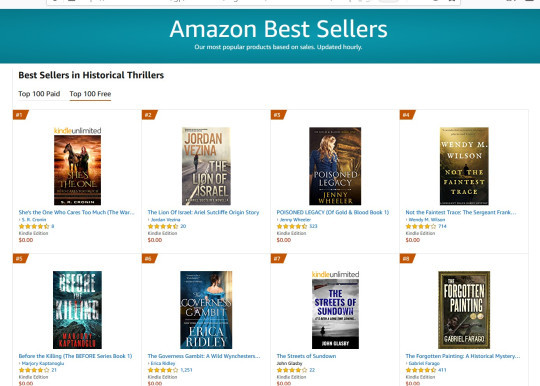
Yup. That is me sitting there at number 1. Now — this just for historical thrillers, and it only lasted for a day, and I was giving them away, not selling them. However, I was number one in a spot on big old Amazon! Does being there make me a bestselling author? (You could say I was selling them for $0.00 …)
What do you think?
Should I join the ranks of those making this claim? Then maybe I’d sell more books and then I’d have more evidence to shore up my boast. We all know people tend to buy books they think other people like … so a little success breeds more success.
Yeah. I’m thinking about it …
May 12, 2021
… and they’d be pissed.
I can’t believe my latest book comes out in TWO DAYS! Here’s another of my favorite quotes from She’s the One Who Gets in Fights.
[image error]
Pre-order it now on Amazon https://www.amazon.com/dp/B08TQKGCP4 or on Smashwords https://www.smashwords.com/books/view/1068509.
I promise it’s a fun read!
May 3, 2021
More Rebellion by Minor Characters
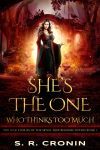 In my books I’ve always had at least one minor character who insists on playing a larger role than I intended. My most recent series is no exception. In She’s the One Who Thinks Too Much, Ryalgar’s grandmother Aliz was slated for nothing more than an introductory scene, but she not only insisted on sticking around, she quietly took over the entire Velka organization. That is one canny old woman for you…
In my books I’ve always had at least one minor character who insists on playing a larger role than I intended. My most recent series is no exception. In She’s the One Who Thinks Too Much, Ryalgar’s grandmother Aliz was slated for nothing more than an introductory scene, but she not only insisted on sticking around, she quietly took over the entire Velka organization. That is one canny old woman for you…
I’m always curious if other writers experience this and recently I got to ask two very different authors what they thought..
Author Geoffrey Saign has a degree in biology, lives in Minnesota, and has written a YA fantasy series called Magical Beasts. His response to my question was emphatic.
Yes!!! Vampire bat Queen Valera in Book 4, Guardian The Stand, the only book she’s in, is in 5 short scenes. Yet she is so fundamentally important to the story, to the main character, and to the fate of an entire world, that it cannot be overestimated. Plus she is super powerful, mysterious, and interesting! An immortal, she can kick butt, and has no patience for stupidity. But she empathizes with the hero of the series, Samantha (Sam) Green and doesn’t want her to die. When this character first appeared, I had a vague idea about her. Then I loved her immediately and needed to put her into three more scenes. I was so enthralled with her, she came into the climactic ending too.
 The same thing occurred in the other books in the series, where a character began as rather mild and ended up as wildly important. In Book 3, Guardian The Sacrifice, the same thing occurred with the Beister, a maniacal killer with huge secrets in his past that directly affected the main character in a shocking way. In Book 2, Guardian The Quest, Drasine, the golden dragon had a significant role, was mysterious, and very powerful. And in Book 1, Guardian The Choice, Heshia, a minor character at first, again became wildly important for the main character, even though she was only in 4 scenes.
The same thing occurred in the other books in the series, where a character began as rather mild and ended up as wildly important. In Book 3, Guardian The Sacrifice, the same thing occurred with the Beister, a maniacal killer with huge secrets in his past that directly affected the main character in a shocking way. In Book 2, Guardian The Quest, Drasine, the golden dragon had a significant role, was mysterious, and very powerful. And in Book 1, Guardian The Choice, Heshia, a minor character at first, again became wildly important for the main character, even though she was only in 4 scenes.
Heshia, Drasine, the Beister, and Queen Valera all had a major impact on the main character, the plot, and the ending. They all made my writing more exciting and fun to complete, and the stories richer.
Author M. C. Bunn is a songwriter with a master’s in English who creates Victorian romance novels, including her most recent one, Where Your Treasure Is. She declared that her misbehaved minor characters made her stories better.
If our characters behaved, we wouldn’t have any stories!
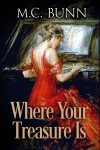 Actually, during the first draft of Where Your Treasure Is, a host of characters completely blind-sided me. Though I never planned per se to write a romance that only focused on the lovers, I was unprepared for the world that opened up around them while I wrote their story. There are Winifred’s cousins, young and old, her Uncle Percival and his manservant Morrant, her staff in the town and country—and George Broughton-Caruthers, her handsome, devilish neighbor. Court is a gang member and horse racing enthusiast. His cronies are other prizefighters, cardsharps, gamblers, prostitutes, and circus folk.
Actually, during the first draft of Where Your Treasure Is, a host of characters completely blind-sided me. Though I never planned per se to write a romance that only focused on the lovers, I was unprepared for the world that opened up around them while I wrote their story. There are Winifred’s cousins, young and old, her Uncle Percival and his manservant Morrant, her staff in the town and country—and George Broughton-Caruthers, her handsome, devilish neighbor. Court is a gang member and horse racing enthusiast. His cronies are other prizefighters, cardsharps, gamblers, prostitutes, and circus folk.
The beginning of Winifred and Court’s story came to me in a flash, as did its end. What I had to find out was what happened in the middle. Every time I sat down to write, thinking that I was about to get back to my lovers, all these characters popped out, and the plot, with all its twists, followed them. What was really strange was how familiar they all were. Dorothy felt like that the entire time she was in Oz. Mentally chasing after these characters through London’s streets and around the Norfolk countryside, so did I.
Yet it was Beryl Stuart, Court’s half-sister, who added a richer, darker layer of complications to a plot that could otherwise have easily been summed up as “lonely rich girl meets poor bad boy” and “the course of true love never runs smoothly.” Because of their differences in social class, Winifred and Court were going to have a rough time of it, no matter what. There’s a dark current that flows out of Court’s world into Winifred’s long before their love story begins, though neither one of them is aware of it. Beryl and her friends bring a second love triangle into the plot, which leads to the next book in the series, Time’s Promise.
I’m also deeply fond of Court’s friend Sam Merton, a boy with a love of firecrackers, rip-roaring yarns, and penny dreadfuls, and Winifred’s memoir-writing uncle, the old adventurer Sir Percival and his manservant Morrant.
I appreciate hearing this from both authors. Frankly they made me feel a little more sane!
For the full posts about both books, each of which was part of a blog tour sponsored by Goddess Fish, check out Magical Beasts Series and Where Your Treasure Is.
April 18, 2021
When a sidekick’s sidekick takes on a major role
In my books I usually have one minor character who insists on playing a larger role in the story. I’m always curious as to whether other authors experience this, so I asked author Bill Zarchy if he had such a character in his novel, Finding George Washington. I was quite impressed with the insight in his response!
A Foil for My Foil
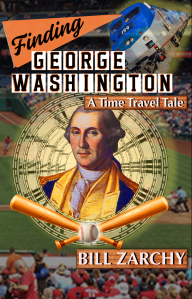 Early in the development of my debut novel, Finding George Washington: A Time Travel Tale, I knew that I wanted to tell the story in the first person, from Tim’s point of view. I wanted to bring General Washington to the present, and I figured that I could show George’s personality and response to the 21st Century through his interactions with Tim.
Early in the development of my debut novel, Finding George Washington: A Time Travel Tale, I knew that I wanted to tell the story in the first person, from Tim’s point of view. I wanted to bring General Washington to the present, and I figured that I could show George’s personality and response to the 21st Century through his interactions with Tim.
Tim was George’s foil, a character whose purpose is to contrast with another character, often the protagonist, to bring out their differences. Think Sancho Panza in Don Quixote, Dr. Watson in the Sherlock Holmes mysteries, or Bud Abbott playing straight man to Lou Costello.
Having Tim as the foil certainly worked out in many ways, but pretty soon, I began to think that I needed to provide him with a sidekick. As I wrote the early parts of the story, it became apparent that the very fact of George suddenly appearing in Tim’s life was astounding, to say the least, and Tim needed his own foil to reflect his astonishment. That’s how the character LaMatthew Johnson came to be. Tim and Matt could have their own private conversations about George, particularly in the early stages of the narrative, where they weren’t sure if they believed his story.
That wasn’t all. As I deepened my research into Washington as a slave owner, I realized that I needed people of color in my story. So Matt is mixed race, descended on his father’s side from enslaved people in the South (the Johnsons), and on his mother’s side from Jews fleeing the Nazis (the Lefkowitches).
From their first meeting, Matt confronts George about his role as owner of many enslaved people, forcing him to acknowledge that slavery is cruel, evil, and immoral. These dialogues elevate Matt’s role in the story from mere sidekick duty. He never gives George a break about slavery, even rejecting the notion Washington was just “a product of his time.”
As I write this, it’s Passover, which commemorates the Exodus, the liberation of the Jews from slavery in ancient Egypt, and I wonder, “was Pharaoh just a product of his time?”
Despite their differences, George and LaMatthew do learn to trust and admire each other. Matt, whose role at first was to help Tim understand and explain George’s momentous presence among them, later takes decisive and risky action to defend George during a surprise ambush. Originally intended as a mere sidekick, Matt thus forces his way into becoming a principal character.
For the full post, which was part of a blog tour sponsored by Goddess Fish, check out Finding George Washington.
April 17, 2021
Review: The Ack Ack Girl
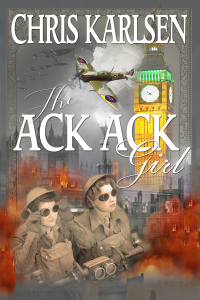 In The Ack Ack Girl, author Chris Karlsen focuses on an amazing event in history that has received surprisingly little attention. As WWII drug on, some English women in the Auxiliary Territorial Service (the ATS, a branch of the women’s army) served in crews of anti-aircraft fighters.
In The Ack Ack Girl, author Chris Karlsen focuses on an amazing event in history that has received surprisingly little attention. As WWII drug on, some English women in the Auxiliary Territorial Service (the ATS, a branch of the women’s army) served in crews of anti-aircraft fighters.
Author Karlsen focuses on one such woman, as she takes you into her day to day life. You learn about Ava’s family history and details of the sort of cake she prefers, the cat she saves in Coventry, and her favorite songs. Karlsen lets the reader follow her emotional journey as she faces her anger at the Germans, joins the ATS, and becomes attracted to a fighter pilot. The nonchalant sexism of the day (by both men and women) is presented through conversation, as are the fears and frustrations caused by the war.
What I liked most about this book was the way Karlsen made me feel as if I walked through life with Ava. This author has an incredible ability to include sights, sounds and smells to make a scene seem real. For example, Ava doesn’t just sit down. “Careful of the peeling paint and rough wood, Ava sat in the rickety bench in front of the barracks to wait for him.” See what I mean?
I also applaud the amount of research put into this novel. From details on the women’s uniforms (and shoes!) to specifics about the tasks the women were trained and allowed to perform, the breath of information is astounding.
I did struggled a little with the style of the book. The author inserts gaps in time, with no more explanation or transition that to say “Coventry-later that day.” To me, it gave the story a feel of walking through an art gallery, looking at related and beautifully done paintings. I’m used to a book being more like a movie, where the action flows and almost everything presented moves the story along. Here, a lot of the detail seems to only serve the purpose of immersing the reader in the immediate scene, well done though that scene may be.
I’d recommend this book to many sorts of readers. Those fascinated by modern history and particularly World War Two would enjoy it, as would those interested in stories of women being allowed to step out of traditional roles, particularly during wartime. It has a romance at it’s center, but it’s also a book about female friendship.
My strongest recommendation, however, would go to anyone wanting to leave this time and place for a while and thoroughly experience another. Go — be part of Britain’s war effort. Reading this book is as close as you’re likely to get to using a time machine.
For more about this book, and the blog tour this review was part of, see The Ack Ack Girl.
April 14, 2021
Vaccination Distractions
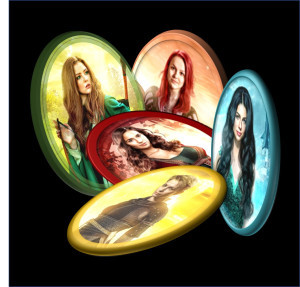
Most of us are getting vaccinated these days, and not all of us feel so great the next day.
I’m a pretty driven person, so I’m usually doing whatever needs to get done. However, I decided to give myself a vaccine break and just do what-ever I felt like for the afternoon. A sort of spontaneous sick day playing on my computer.
It was great. I drank hot tea and cuddled up under my favorite blanket and I even ate cookies. I started out with my newest pastime — I recently discovered Mahjong and now I’ve found two different places to play it online. I already knew I was drawn to classic games, those without people or plots, maybe because I tend to write such complicated books. Matching patterns soothes me, and let’s me turn off the words part of my brain.
I’ve also reaffirmed that I love playing with graphics. It’s what I do if you leave me alone with a computer and I’m not playing a game. Look at this cool collage I made with the first five main characters in my new series. I had more more fun doing this than I can possibly explain.
What can I say. To each our own, huh?
If you do get vaccinated (and I hope you will!) I wish you a nice recovery day, too, doing whatever dumb little things relax you and make you happy.
(This is shared from a post on my blog Seven Troublesome Sisters.)
April 11, 2021
When shouldn’t you make up words for your book?
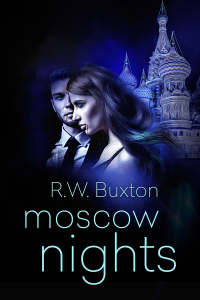 I love to ask other fantasy authors how much vocabulary they created for their books. R.W. Buxton, author of Moscow Nights surprised me recently with his answer of “one word.” Read his interesting explanation of why.
I love to ask other fantasy authors how much vocabulary they created for their books. R.W. Buxton, author of Moscow Nights surprised me recently with his answer of “one word.” Read his interesting explanation of why.
This is an easy one… Just one. Day-walker, a person with vampiric powers that aren’t undead and can survive the sun. Although in this book I break the rule, I guess you’ll have to read it to find out how, and why.
In urban fantasy, in general, I don’t see the need for the creation of many new words. After all, it’s set in the world we are all familiar with. A world we can reach out and touch every day. Sure there are fantastical creatures like vampires, werewolves, or ghosts, but they don’t require that many new words. There is one exception to this, and that’s urban fantasy that involves the Fae. For me, these usually cross over into the realm of true fantasy novels. In this sub-genre I find there is a good deal of new vocabulary and of course new worlds, or should I say realms.
Not that the first draft of Capital Thirst, my first novel, didn’t have its fair share of new vocabulary. After I posted that draft to an author critique site, I received overwhelming feedback that it wasn’t necessary and confused the reader. It disheartened me. I worked hard to create that vocabulary to build a mystic vampire world. Not to mention it was my first novel, and I wanted everyone to love it.
After much thought, I decided these other authors were probably right. It wasn’t necessary, and I wanted the book to take place in the real world, albeit one with vampires. So I took it out.
There is clearly a time and place for creating new vocabulary. Science fiction or pure fantasy, for example. But in the end, it just wasn’t necessary for the type of writing I’m doing. Overall, it just confused things.
Find Moscow Nights at
Amazon — https://www.amazon.com/dp/B08KXG6CWS
Apple — https://books.apple.com/us/book/moscow-nights/id1527771232
BN — https://www.barnesandnoble.com/w/moscow-nights-rw-buxton/1137483626
Kobo — https://www.kobo.com/us/en/ebook/moscow-nights-7
See the original post, which was part of a Goddess Fish Book Tour, at Moscow Nights.
April 10, 2021
World Building in the Once Upon A Princess Novellas
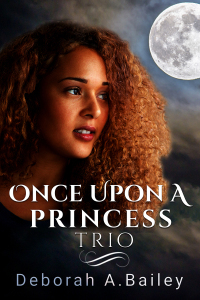 I host book tours on my other blogs and when I get a guest post that impresses me, I like to repost it here. Recently I featured author Deborah A. Bailey who has this beautiful website. (Full disclosure, she has hosted one of my books there.)
I host book tours on my other blogs and when I get a guest post that impresses me, I like to repost it here. Recently I featured author Deborah A. Bailey who has this beautiful website. (Full disclosure, she has hosted one of my books there.)
Anyway, when I featured her I asked her about how much vocabulary she created for her fantasy worlds in her Once Upon A Princess Trio. I got back fascinating information about what guided the creation of her entire worlds. Enjoy her answer.
For my worldbuilding, I considered creating words for the worlds I was writing about. But as it turned out I only ended up creating one word, “Malida.” The reason I created it was because I wanted to use it during a conversation between the hero and heroine in Heart of Stone. Willem, the hero, uses that word to refer to the heroine’s grandmother. The grandmother is a former queen of the province where the story is set. In the aftermath of a war, the heroine, Leesa, and her grandmother are (as far as they know) the only remaining members of the royal family.
When Willem asks Leesa about her grandmother he calls her Malida, which is also a term of endearment. It means “great mother.” For Willem to know that name, he would have to have known more about the family than he’s admitting.
Though I didn’t focus on creating the words and language for those worlds, Since they’re based on fairy tales, I made sure to include certain elements. For instance, I included princesses, magic, and fantasy creatures. In Heart of Stone Willem is a gargoyle who is under a magical curse. He lives in a deserted palace and he has access to enchantments that were left there by the former inhabitant.
In Beauty and the Faun, the heroine ends up escaping into the Great Forest and it becomes a refuge. Forests are often used fairy tales as places filled with magic and mystery. Satyrs, forest nymphs, centaurs and fauns are among the inhabitants of the Great Forest. Each group has their own culture and behavior that they’re known for. The heroine finds these creatures when she enters the forest, and they show that this is an entirely different world than the one outside.
In Land of Dreams the Great Forest is also included, along with fauns and water nymphs. I added additional magical characters, such as elementals, shifters, and river deities. There’s also a character called the Night Queen who presides over the elementals. While I would’ve loved to have created other words (and languages) for the stories, I made sure to include many fantasy elements and fairy tale touches to set the mood.
April 4, 2021
Through the Eyes of the Blind
I went to college to become a science writer, but I had a bigger plan. I’d cover breakthroughs in neuroscience and nuclear physics by day and then I’d write killer science fiction by night.
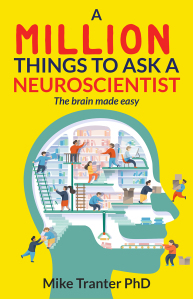 I made my way through copy editing and ad writing classes while cramming in all the science and creative writing my schedule allowed. I did manage to get a fantastic well-rounded education and I left with more than a diplomma. I had a pretty decent roadmap for my life.
I made my way through copy editing and ad writing classes while cramming in all the science and creative writing my schedule allowed. I did manage to get a fantastic well-rounded education and I left with more than a diplomma. I had a pretty decent roadmap for my life.
Then, well, life happened instead and it wasn’t even close.
However, I still have a great deal of respect for those scientists who communicate well, and those writers who love and understand science. Together they explain facts and theories about the amazing universe in which we live.
I host book tours on my other blogs and when I get a guest post that impresses me, I like to repost it here. In late March I featured author and neuroscientist Michael Tranter, PhD and his popular science book A Million Things To Ask A Neuroscientist. I got to ask him a question and I wanted to know what he thought was the most amazing thing in his book.
Enjoy his answer.
How can you be blind but still see? (The brain is amazing, that’s how!)At the back of the brain we have the occipital lobe. This region receives images from our eyes and optic nerves and decides what we are seeing before sending that information to other parts of our brain to determine how to react. So, if we see an adorable fluffy dog, the light reflected from that dog travels to our retina at the back of our eye, along the optic nerve and to the occipital lobe, where it is processed. Other areas then interpret the meaning and decide what the emotional response should be, resulting in a very excited ‘Aww, a cute puppy – I like this, I feel happy!’
However, damage to the occipital lobe, for example, through trauma, a brain tumour or a stroke, can result in the images of the cute puppy arriving at the visual areas safely, but not being processed or transmitted to other areas of our brain, and hence, we become blind. This is a little different to instances where the eyes or optic nerve don’t function. This additional blindness is termed cortical blindness – essentially, blindness in the brain. You may be asking why I am talking about cute puppies and blindness. Well, because in some people with cortical blindness, even though they can’t see particular objects, their subconscious brain still perceives them. This means a person can interact with something even if they don’t actually see it. Let’s use another example. Say you want to walk across the room to the doorway, but there is a chair in your path. Under normal circumstances, you would see the chair and walk around it. A person with blindsight would also walk across the room and avoid the chair, yet they would not actively see that there is a chair in the room. They simply avoid it but do not fully understand why.
This strange phenomenon was first documented in the 1974 research by Lawrence Weiskrantz and has since been recorded in all manner of situations. A person may catch a ball in mid-air without ever seeing it, for example, but perhaps the most interesting study shows how it is possible to identify facial emotions and even mirror those same emotions in your own face, without ever being consciously aware of seeing any facial expressions.
Blindsight has been rigorously tested in many experimental settings, and as such, neuroscientists think they have an explanation. Firstly, the fact that some people with cortical blindness experience the phenomenon of blindsight may be because the superior colliculus – an area of the brain important in visual orientation – is preserved. Although we don’t yet fully appreciate the full function of the superior colliculus, we do know that this area receives information about what we see and converts it into signals that initiate an appropriate movement. To help explain this, imagine sitting down and watching a racing car drive past. Our eyes and head would instinctively follow the car as we track its movements. This is the responsibility of the superior colliculus, to instinctively monitor the environment and decide how to move our body.
The current hypothesis for blindsight states that as the brain senses damage to the occipital lobe, it starts to rewire itself to bypass the visual areas. The person may never entirely regain normal vision, but they may still be capable of living a normal life. Some neuroscientists suggest that this is a process by which the brain reverts back to a more basic form of vision, and one that is seen in animals who naturally lack the advanced visual areas of a human brain.
So, there you have it. That is how you can be blind, but your brain can still see, pretty amazing right?
For the full post, which was part of a blog tour sponsored by Goddess Fish, check out A Million Things To Ask A Neuroscientist.



